72 F. high in the Twin Cities Tuesday.
84 F. average high on July 7.
87 F. high on July 7, 2014.
July 7, 2000:
Torrential rains douse the south metro of the Twin Cities with 8 inches
in a three to five hour span in a small part of northern Dakota county.
The hardest hit was the city of Eagan. Many homes were flooded.
July 7, 1955:
Tornado hits Marshall, leaving one dead and 13 injured. Hail causes one
million dollars in damage. Source: Twin Cities National Weather
Service.
Delightfully DumbSchedule
your test-taking for cool, damp, gloomy days. When it's sunny and
spectacular avoid operating heavy machinery or doing anything that
requires thinking.
That's the take-away from research out of
Australia and
Harvard
(details on the blog below) showing that when it's sunny we tend to be
happier, which sends a signal to our brains that all is well and there's
less need to think deeply and carefully. It's an oversimplification -
but beautiful weather makes us dumber. OK.
This may explain L.A.
Our
collective IQ drops a few points into next week as an authentic hot
front approaches from the Plains, kicking up a few stray weekend storms
and potentially beastly dew points in the 70s. A tropical, sauna-like
airmass oozes into town this weekend, inspiring many of us to go jump in
a lake.
NOAA guidance hints at 90F by
Sunday
with a dreadfully-drippy dew point in the 70-75F range next week with a
heat index topping 100F at times. Throw in some smoke from Canadian
fires and you have one giant barbecue and we're all invited!
The
core of this midsummer heat wave passes just to our south but I suspect
the next 2-3 weeks will be the hottest of the entire year.
Possibly the dumbest too.
Why A Beautiful Summer's Day Could Be Making You Dumb. Uh huh. I rest my case. The weather CAN be too nice! It said so at
Yahoo Finance; here's an excerpt that proves my point: "...
According
to the researchers, gloomy weather hampers our mood, which makes us
think more deeply and clearly, allowing us to recall more things
accurately. In contrast, sunny weather makes us happier, which sends a
signal to our brains that everything is fine and there's less need to
think deeply and carefully about things. More recent research out of Harvard also found bad weather can make us more productive by eliminating the cognitive distractions that result from good weather..."
More Smoke.
As of late last night Air Quality Alerts were in effect for west
central Minnesota, the plume of Canadian smoke reaching the ground and
increasing particulant pollution. Details from NOAA:
...SPECIAL AIR QUALITY NOTICE FOR PARTS OF WISCONSIN...
THE WISCONSIN DEPARTMENT OF NATURAL RESOURCES HAS ISSUED A SPECIAL AIR QUALITY
NOTICE FOR PARTS OF WISCONSIN.
THE WILDFIRE SMOKE THAT HAS BEEN OVER WISCONSIN FOR SEVERAL DAYS IS NOW BEING
BROUGHT DOWN TO THE SURFACE.
A COLD FRONT HAS PASSED THROUGH THE STATE DURING THE LATE NIGHT HOURS OF MONDAY INTO
TUESDAY MORNING. TYPICALLY...THE AIR BEHIND A COLD FRONT IS DESCENDING THROUGH THE
ATMOSPHERE. THIS DESCENDING MOTION IS WHAT IS BRINGING THE WILDFIRE SMOKE TO GROUND LEVEL.
THE PM2.5 AIR QUALITY HAS REACHED THE UNHEALTHY LEVEL FOR SENSITIVE GROUPS (ORANGE CATEGORY) AT SEVERAL MONITORING SITES ACROSS NORTHERN AND WEST-CENTRAL WISCONSIN. THE SENSITIVE GROUPS CATEGORY INCLUDES CHILDREN...ELDERLY PEOPLE...INDIVIDUALS WITH RESPIRATORY AND CARDIAC PROBLEMS...OR ANYONE ENGAGED IN STRENUOUS OUTDOOR ACTIVITIES
FOR A PROLONGED PERIOD OF TIME.
THE WIDTH AND DENSITY OF THE SMOKE PLUME WILL VARY AT ANY GIVEN LOCATION. THE FORECAST IS FOR THE SMOKE TO MOVE SOUTHEASTWARD ACROSS THE STATE THIS MORNING.
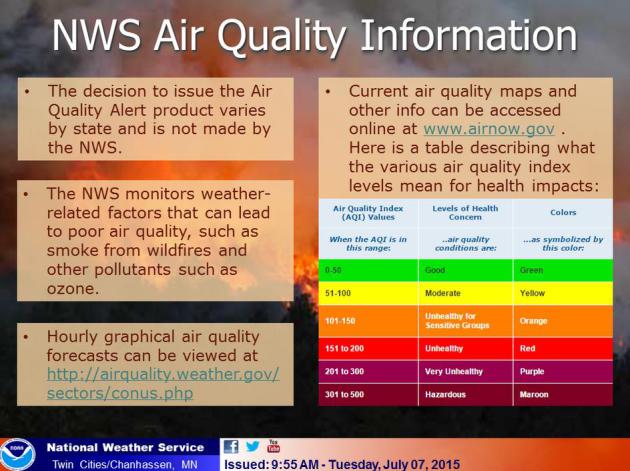
Air Quality. The latest AQI for Minnesota can be found
here.
As of late last night it was in the 50s, but that number may rise as
prevailing winds aloft pump more smoke south of the border.
Dry Into Friday Afternoon.
A weak ridge of high pressure hangs on for the next 48+ hours; the
approach of warmer, stickier air setting off a few scattered T-storms
Friday night into the weekend as dew points rise thru the 60s into the
70s by Sunday. If you've been missing summer heat and humidity you're in
for a treat by early next week. NAM guidance: NOAA.
June 2015 Smashes Heat, Rainfall Records Across the USA. Here's a snippet of a long list of weather records shattered last month, courtesy of
The Weather Channel:
- Reno, Nevada: Record hottest June; previous record was in 2006.
- Salem, Oregon: Record hottest June; previous record was in 1926.
- Salt Lake City: Record hottest June; previous record was in 1988.
- Seattle: Record hottest June; previous record was in 1992; also the record warmest January-June.
- Spokane, Washington: Record hottest June; previous record was in 1922.
- The Dalles, Oregon: Record hottest June; previous record was in 1977.
- Walla Walla, Washington: Record hottest June; previous record was in 1992.
- Wenatchee, Washington: Record hottest June; previous record was in 1992.
- Winnemucca, Nevada: Record hottest June; previous record was in 1918.
- Yakima, Washington: Record hottest June; previous record was in 1948.
Map credit above: "
Locations
setting notable hot, wet, dry, or cool records in June 2015, or for the
first six months of 2015. Underlay contours depict radar-estimated
rainfall in June 2015. The heaviest totals are shown by red and pink
shading."
Busy Day For Tropical Systems In The Pacific Ocean. Not a great time to be taking a cruise near Fiji or Guam. Here's an excerpt from NOAA's
Environmental Visualization Laboratory: "
Two
typhoons, one tropical storm, one formation alert and one large area of
increased convection is making for a busy day in the northern Pacific
Ocean. From left to right: Tropical Storm Linfa is in the South China
Sea meandering slowly northward with winds holding steady near 55 knots.
A turn to the west toward land is expected during July 8. Typhoon
Chan-Hom has winds near 100 knots and strengthening, heading
west-northwest toward the East China Sea, passing south of Okinawa
around July 9. Typhoon Nangka is east of Guam heading west-northwest
with winds intensifying near 140 knots in a couple of days. The large
area of convection southwest of Hawaii is not expected at this time to
develop into a tropical system, despite its satellite presentation. To
the far east of this image can be seen the Hawaiian Islands; to the
southeast of the Islands an area of convection is consolidating, and the
Joint Typhoon Warning Center states, "Formation of a significant tropical cyclone is possible...within the next 12 to 24 hours." This image was taken by the JMA MTSAT-2 satellite at 0230Z on July 7, 2015..."
Tropical Cyclone Activity May Boost El Nino.
Things are very active in the western Pacific and this may impact the
extent of warming in the equatorial Pacific, according to the
Australian Bureau of Meteorology. Here's an excerpt: "...
The
2015 El Niño is likely to strengthen in the coming weeks, largely due
to recent tropical cyclone activity. Several tropical cyclones,
including a rare July cyclone in the southern hemisphere, have resulted
in a strong reversal of trade winds near the equator. This is likely to
increase temperatures below the surface of the tropical Pacific Ocean,
which may in turn raise sea surface temperatures further in the coming
months. All international climate models surveyed by the Bureau of
Meteorology suggest El Niño will persist until at least the end of 2015.
Models also indicate that further warming is likely. Historically,
El Niño reaches peak strength during late spring or early summer..."
Image credit:
earth.nullschool.net.
Conga-Line of Pacific Typhoons.
The strongest storm, Typhoon Chan-hom, may grow to Category 4-5
strength before weakening as it approaches China's coastline in 3-4
days, but Shanghai may be impacted by strong winds and rough surf. More
details from Andrew Freedman at
Mashable. Image credit:
Earth Simulator.
Strengthening El Nino.
Latest guidance
from NOAA NESDIS shows an acceleration in the warming of the Pacific;
unusual heat building off the coast of Central America and off the
Pacific Northwest coast.
Drought May Be Causing Increase in Shark Attacks off Carolina Coast.
Waters are warmer, sooner, and drought is causing less fresh water to
be discharged near the coast, allowing sharks to come closer to shore.
Here's an excerpt of a good potential explanation from
FOX2now.com: "...
What’s
behind the increase? A number of factors could be contributing to the
apparent rash of attacks, such as warmer water and drought conditions,
said George Burgess, director of the Florida Program for Shark Research.
Drought conditions reduce the amount of freshwater making it to the
sea, which creates an environment along the shore where higher salt
levels attract more fish and sharks, Burgess said..."
Canada Is Burning and America Is Choking On Her Smoke.
MSN has the story - here's a clip: "..
.Canada
is burning. Not all of Canada, but rather tens of thousands of acres of
forest from Manitoba to Saskatchewan to British Columbia are on fire
and all that smoke is choking much of the western and central US.
Monday, that smoke settled over the Twin Cities of Minneapolis and St.
Paul, leading to alerts about dangerous air quality and countless photos
of the haze on social media. Government officials advised people to
limit outdoor activities, especially among populations sensitive to bad
air, including children and the elderly..."
Alaskan Wildfires Char Nearly 2 Million Acres, Send Smoke to South Carolina. It's the next best thing to a (bad) Alaskan vacation. Here's an excerpt of a good explainer from Andrew Freedman at
Mashable: "
Alaska
is on track to have one of its worst wildfire seasons on record,
propelled by a combination of warming average temperatures, a
historically mild, relatively snowless winter and extremely mild spring.
So far this year, 1.88 million acres have gone up in smoke, from 617
individual fires. June 2015 beat June of 2004 in terms of both number of
fires and amount of acres burned, which means this year is now
outpacing the state's worst wildfire season ever recorded. With hundreds
of fires still burning in Alaska and in Canada, smoke has made it all
the way across the Midwest and Mid-South to the Atlantic Coast, crossing
over the Atlantic Ocean off the coast of South Carolina on Wednesday..." (Image: NASA).
Why We Can't Fall Asleep.
Keep electronic devices (including smartphones) out of your bedroom and
you stand a better chance of getting a good night's sleep. Here's an
excerpt from
The New Yorker: "...
Now,
however, that natural prediction system is being constantly
wrong-footed. The problem isn’t just artificial light in general.
Increasingly, we are surrounded by light on the short-wave, or “blue
light,” spectrum—light which our circadian systems interpret as
daylight. Blue light emanates from our computers, our televisions, our
phones, and our e-readers; ninety per cent of Americans use electronic
devices that emit it. When we spend time with a blue-light-emitting
device, we are, in essence, postponing the signal to our brain that
tells it that it’s time to go to sleep. (“What have we done with our
dusk?” Charles Czeisler asks.) When “dusk” gets pushed progressively
later because of these false light cues, we get a surge of energy rather
than the intended melatonin release..."
How To Maximize Your Vacation Happiness.
The rush we get from material things wears off, in most cases rather
quickly. But experiences often live on in the stories we tell and
overall levels of satisfaction in our lives. Here's an excerpt of an
interesting article at
New York Magazine: "...
In terms of happiness-per-dollar-spent, vacations are the right idea in general. A lot of past research
has suggested that experiences in general provide more happiness than
material goods. That’s partly because — excited new owners of the latest
iPhone who won’t shut up notwithstanding — humans generally have more
of a tendency to talk about experiences than mere stuff. “When one buys
an experience, they seem to be buying themselves a story as well,” said Dr. Amit Kumar,
a social psychologist and postdoctoral researcher at the University of
Chicago’s Booth School of Business who studies the relationship between
money and happiness. “So one way vacations continue to provide hedonic
benefits even after they've long since passed is because they live on in
the stories we tell...”
I Think I'll Pass On The Danish Beer. Fertilizer for barley crops? I'm all for craft beer, but in this case I think I'll stick with wine.
Gizmag has the details of a unique and potentially tasteless Danish recycling project: "
Rather
than collect and treat the copious amount of pee produced by
beer-swigging live music lovers, the organizers of last week's Roskilde
Festival and the Danish Agriculture & Food Council opted to put all
that liquid gold to good use. A beercycling project dubbed "From piss to
pilsner" invited attendees to leave deposits for local farmers to use
as fertilizer for barley crops grown to make beer..."
Runner-Up For Best TV Anchor-Hair in Minnesota?
Congratulations to Dawn Stevens at KMSP for snagging the top award.
KARE-11's Julie Nelson came in as a runner-up in the coveted
HAIRRY Awards. Here's an excerpt of the story: "
The
competition in Minnesota was certainly close, and in the end, Julie
Nelson’s well-deserving golden locks will have to settle for second
place. But that doesn’t mean they’re any less enchanting, in fact, all
you have to do is take one look at those luxurious dark roots and you..
can.. almost….get……lost…….Sorry! We’re still here. Just need to focus.
Whew!..."
TODAY: Partly sunny and warm. Still very comfortable. Winds: South 5-10. High: 79
WEDNESDAY NIGHT: Clear and mild. Low: 60
THURSDAY: Mix of clouds and sun, still quite pleasant. Dew point: 58. High: 81
FRIDAY: Warm sun, few complaints. Wake-up: 63. High: 83
SATURDAY: Warmer with sticky sun, late T-storm. Dew point: 66. Wake-up: 67. High: 86
SUNDAY: Hot sun, stray T-storms. Dew point: 73. Wake-up: 71. High: 90
MONDAY: Steamy, more numerous T-storms. Wake-up: 73. High: 89
TUESDAY: Hazy sun, still very sticky. Dew point: 74. Wake-up: 72. High: 91
Climate Stories...
Tweet courtesy of
Capital Climate.
The Beyond-Two-Degree Inferno. The
time for debate is over; it's time to take action, according to Marcia
McNutt, Editor in Chief of Science Journals; here's an excerpt of her
Op-Ed: "...
In
Dante's Inferno, he describes the nine circles of Hell, each dedicated
to different sorts of sinners, with the outermost being occupied by
those who didn't know any better, and the innermost reserved for the
most treacherous offenders. I wonder where in the nine circles Dante
would place all of us who are borrowing against this Earth in the name
of economic growth, accumulating an environmental debt by burning fossil
fuels, the consequences of which will be left for our children and
grandchildren to bear? Let's act now, to save the next generations from
the consequences of the beyond-two-degree inferno."
B.C. Fires Made Worse by Climate Change? It's probably a combination of factors, but the climate trends (warmer and drier) aren't helping.
CBC News in Canada has the story; here's a clip: "...
Roughly
200 wildfires are burning across B.C. in a season that has come earlier
than usual. The furious blazes and smoke have prompted a province-wide
ban on campfires, evacuations, and air quality advisories. Innes say two
weather trends — the Pacific Decadal Oscillation and El Niño — happened
to coincide this year to cause a hotter, drier summer. Climate change
then further exacerbates the situation, causing an extraordinary
wildfire forest season in B.C. Though most wildfires are either caused
by humans or lightning, Innes says the spread of fires depends on how
warm or dry an area is and those conditions appear to be affected by
climate change..."
Photo credit above: "
While it
will be more commonplace 30 to 50 years from now, this year's intense
wildfires and smoky skies is combination of climate change and other
weather factors, says one expert." (B.C. Wildfire Management Branch).
Pope Calls Us To Stop Self-Destructive Actions. Here's an excerpt of an Op-Ed from Rep. Raul Grijalva who serves in the U.S. House of Representatives, courtesy of
azcentral.com: "...
Young
people demand change. They wonder how anyone can claim to be building a
better future without thinking of the environmental crisis and the
sufferings of the excluded. ... The earth's resources are also being
plundered because of short-sighted approaches to the economy, commerce
and production." Despite what the pope's critics want us to believe,
this is not a narrow environmental message divorced from our larger
reality. It embraces our larger reality and calls on us to change it for
the benefit of those who have suffered too long..."
John Feehery: A Brave New GOP. I like the vision he outlines at
TheHill; here's an excerpt: "...
The
Republican Party should stop being afraid of the future. We should be
the party of the immigrant. Immigrants are the lifeblood of this
country. They provide economic growth, new workers, birthrates, new
ideas and new energy. America is better because of its immigrants. We
should be the party of technology and applied science. We shouldn’t be
the party at war with the scientific community over issues like climate
change. We should be the party of environmental protection and
environmental innovation. We can grow the economy smartly without
destroying the world we live in..."
Climate Change Plays Significant Role in Europe Heat.
Climate Central
talks about the record heat gripping much of Europe and how much of it
can be attributed to a warmer temperature baseline. Here's an excerpt: "
A
team of international scientists says it is virtually certain that
climate change increased the likelihood of the ongoing heat wave
stretching across much of Europe. The risk increased by a factor of two
or more over a large part of Europe, up to more than a factor of four in
some of the hottest cities. The results are a part of the developing
field of “weather attribution”
that uses observational weather and climate data, weather forecasts and
climate models. It is widely accepted that climate change, in general,
will increase the frequency, intensity and duration of heat waves (Meehl
and Tebaldi, 2004 [1]; IPCC, 2014 [2]). The field of extreme event attribution aims to analyze individual weather events over a smaller region (Stott et al., 2004 [3]).
In the case of the ongoing heat wave in Europe, Climate Central
convened an international team of scientists from Oxford University,
KNMI, Red Cross Red Crescent Climate Centre, along with regional
partners from CNRS and MeteoSwiss in order to assess the potential role
of global warming on a specific extreme 3-day event, while the event is
happening..."
Dozens of Nobel Prize-Winning Scientists Call for Action on Climate Change. Here's an excerpt from
ThinkProgress: "
Sixty
years ago, Nobel laureates gathered on a tiny island in Western Europe
and warned the world of the dangerous effects of nuclear weapons. Last
Friday, on the same island, 36 Nobel Prize winners took up another
cause: climate change, which they said poses a “threat of comparable
magnitude” to nuclear war. “If left unchecked, our ever-increasing
demand for food, water, and energy will eventually overwhelm the Earth’s
ability to satisfy humanity’s needs, and will lead to wholesale human
tragedy,” the Nobel laureates’ declaration reads. “Already, scientists who study Earth’s climate are observing the impact of human activity...”
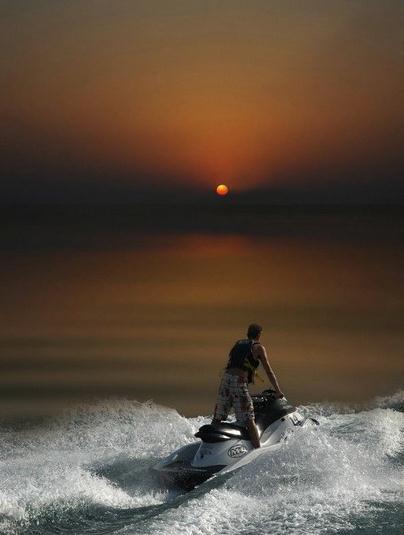
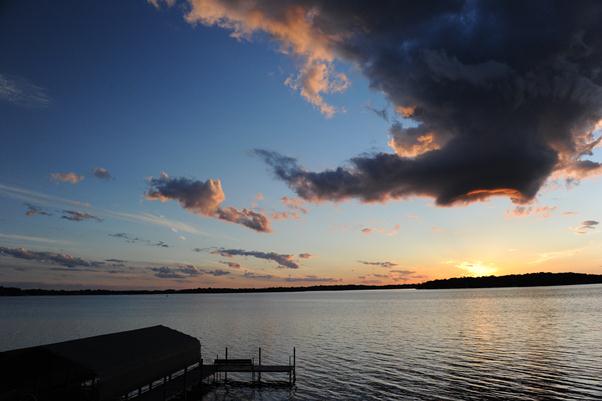
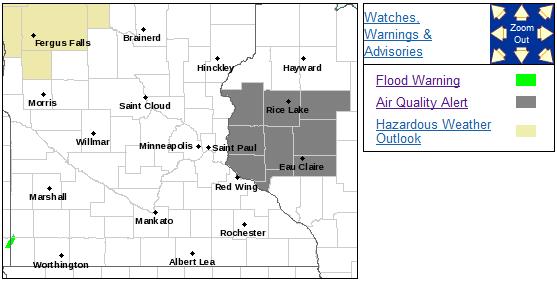

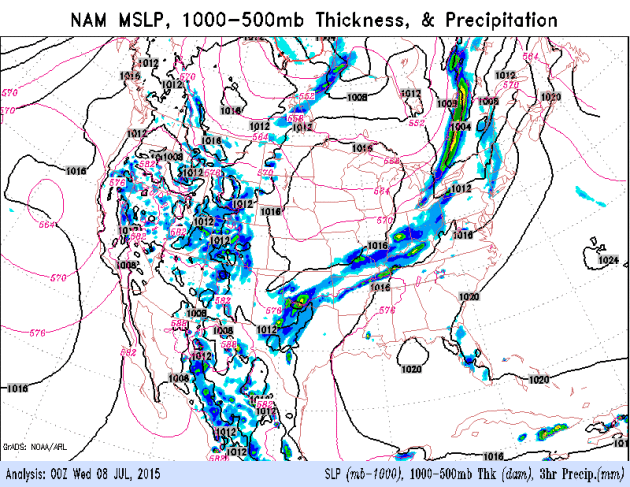
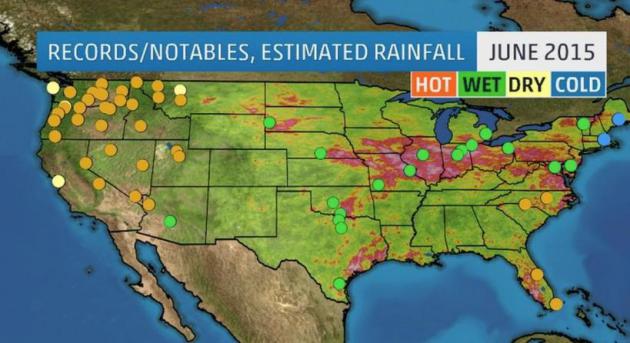
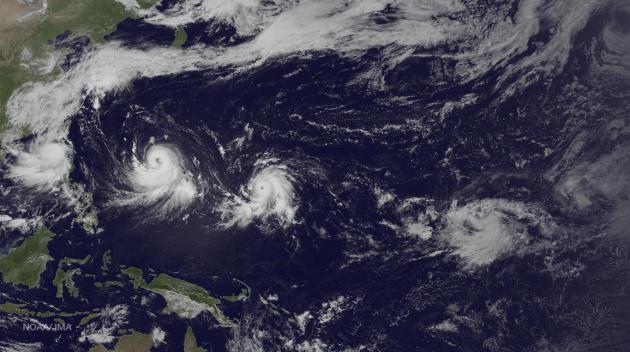
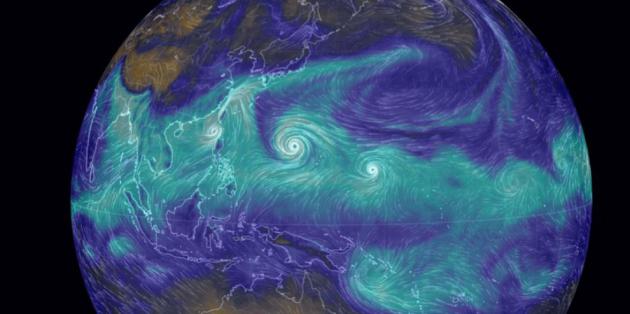
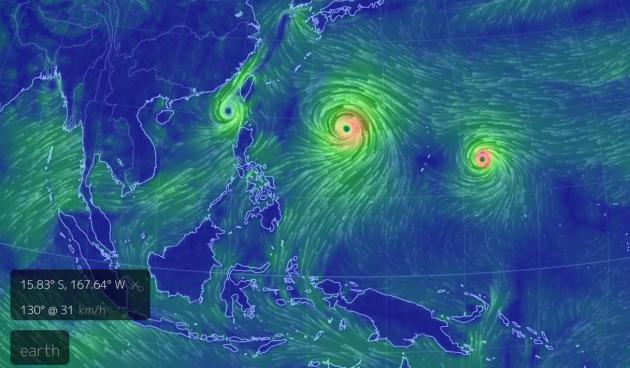
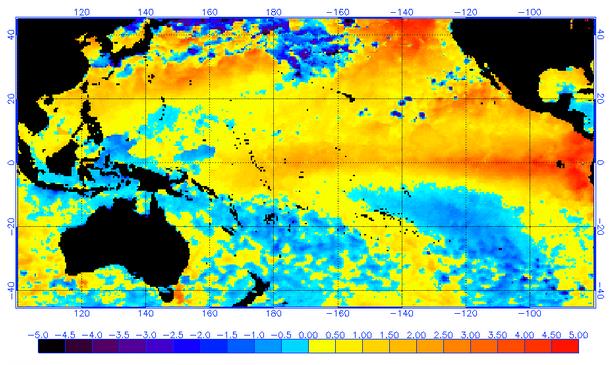
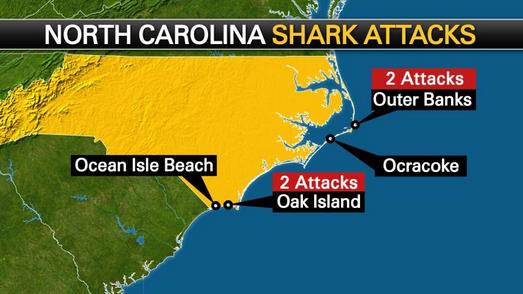
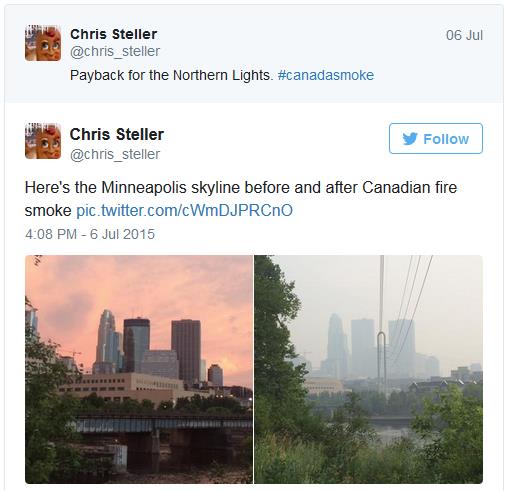
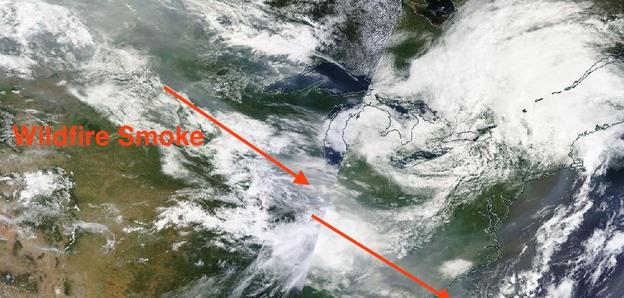
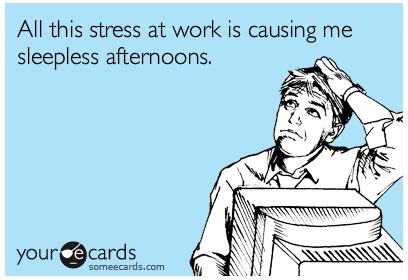

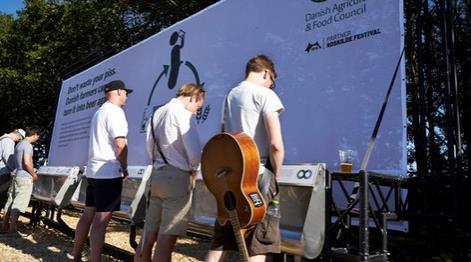

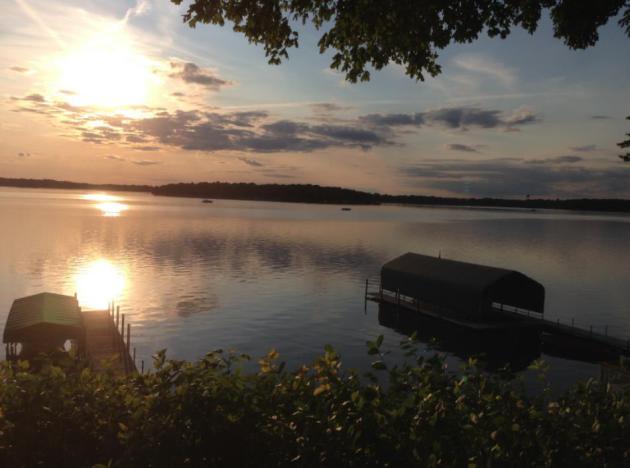
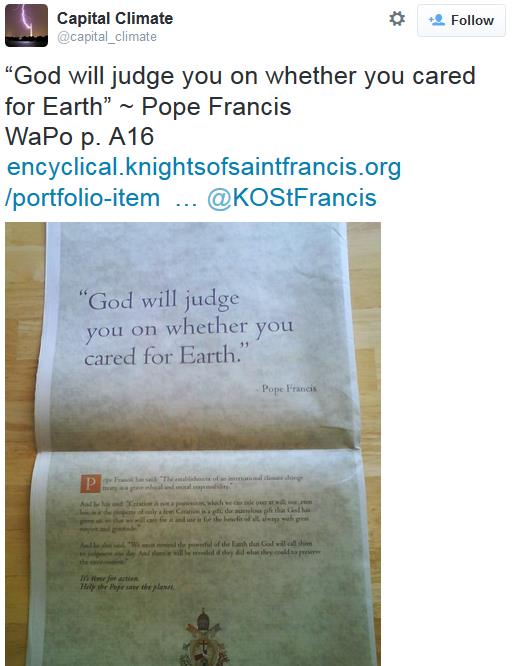
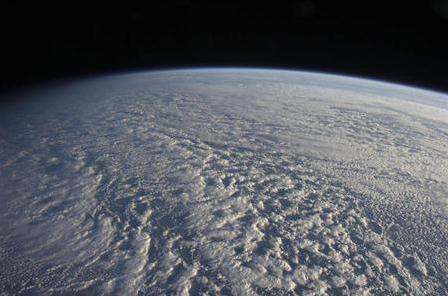
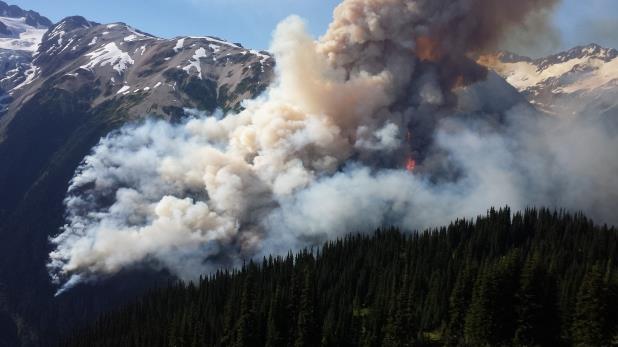
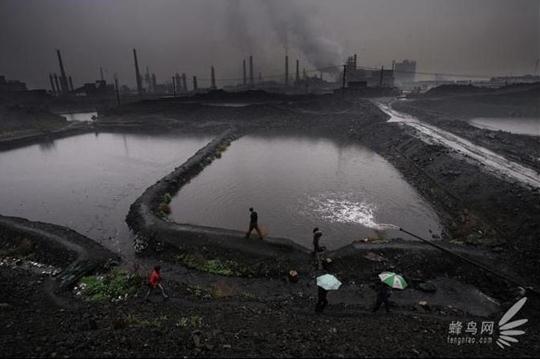

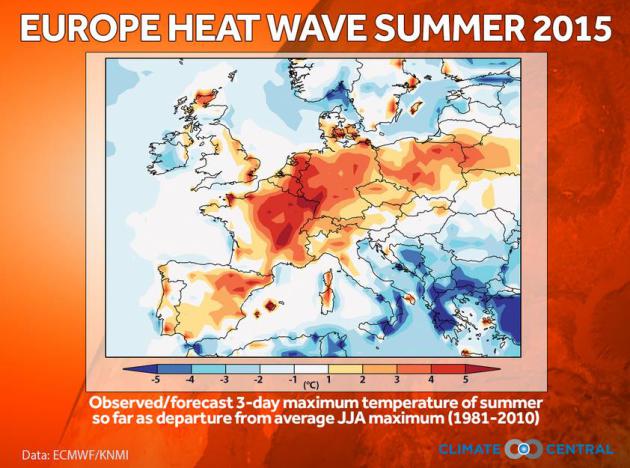
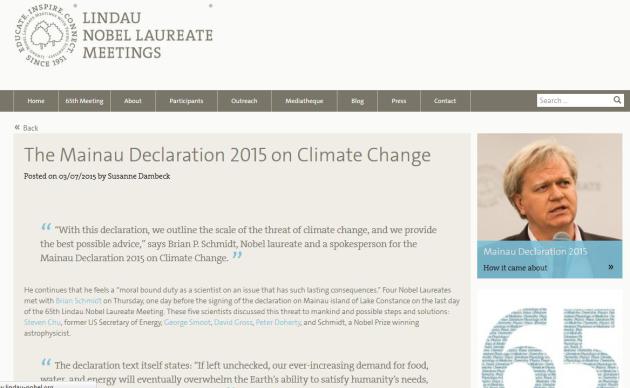
No comments:
Post a Comment